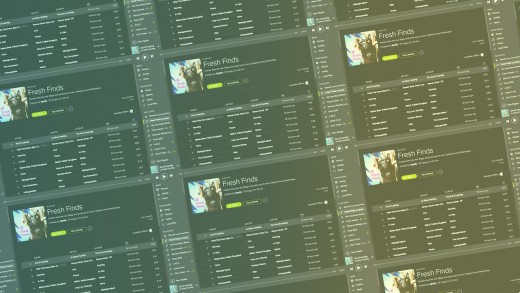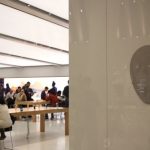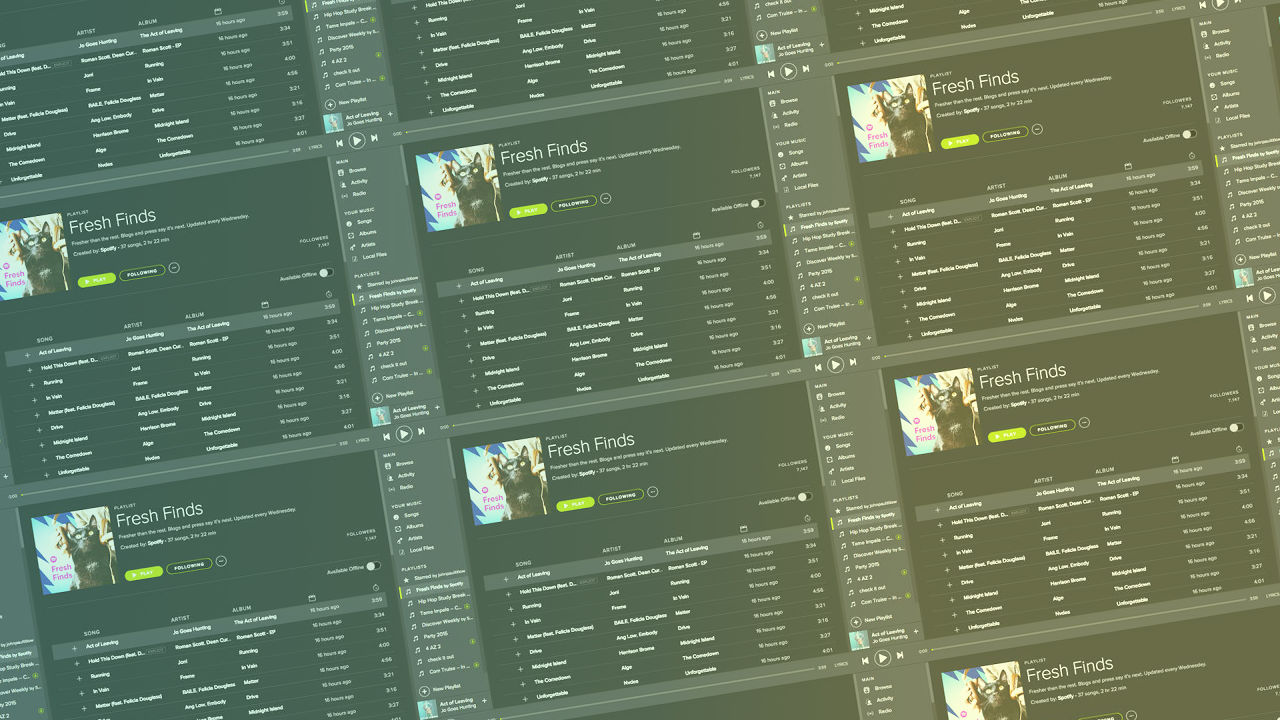inside of Spotify’s Plan To take on Apple track
We keep hearing things like “human-curated” and “computing device listening,” however what does it in truth mean for you?
July 31, 2015
Brian Whitman landed at Spotify simply in time. The MIT Media Lab alum and computing device listening skilled joined the product staff at Spotify early closing 12 months when the streaming large dropped a stated $one hundred million to acquire The Echo Nest, the song data company he cofounded a decade in the past. since his time at MIT, Whitman, together with cofounder and fellow PhD Tristan Jehan, has focused obsessively on the intersection of huge knowledge, synthetic intelligence, and tune, the usage of that sweet spot to try and redefine song discovery within the age when songs drift freely like water and new artists pop up by using the hour. today, he is sitting throughout from me in a conference room in Spotify’s big apple headquarters showing me what his workforce has been building for the previous couple of months.
it is called fresh Finds. at first look, it’s simply some other playlist—it will probably simply be one of the crucial collections hand-curated by way of Spotify’s 32 music editors, or one among its 75 million users for that topic. however recent Finds is completely different: The weekly playlist is generated the use of a piece of the predictive giant information technology that Whitman and his group at the Echo Nest brought with them to Spotify final March. The mission of recent Finds is to identify under-the-radar artists which are generating buzz on-line and floor those most likely to interrupt out.
“recent Finds is a distillation of the hippest users on Spotify,” says Whitman, pulling up an inventory of 38 tracks projected in opposition to the convention room wall. “These are the artists that are going to break out soon because they’re being listened to with the aid of these folks.”
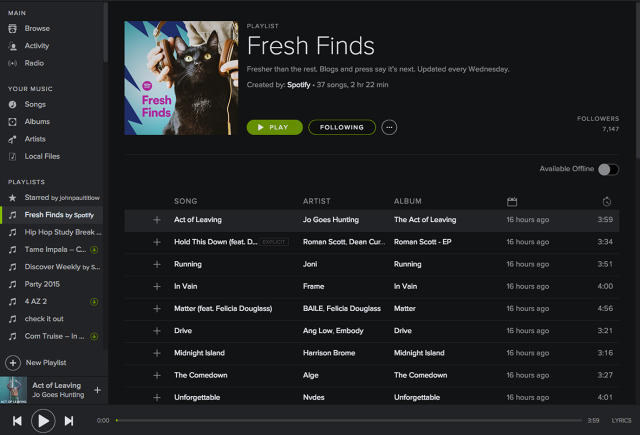
i don’t recognize any of the artists on the list. Neither did he, Whitman admits. however now lots of them have made their method into his day-to-day rotation. “simply wait a couple of weeks and other people will begin talking an increasing number of about them and they will take off.”

How does he understand? The machines instructed him, naturally. fresh Finds takes a valuable portion of The Echo Nest’s unique methodology—its internet content material crawler and natural language processing expertise—to mine tune blogs and evaluations from websites like Pitchfork and NME and figure out which artists are beginning to generate buzz, however don’t but have the listenership to show for it. the use of natural language processing, the gadget analyzes the textual content of these editorial sources to take a look at and take into account the sentiment round new artists. for example, a blogger might write that a band’s “new EP blends an early ’90s throwback grunge sound with mid-’80s-model synthesizers and manufacturing—and it’s the perfect thing to come out of Detroit in years.” If this imaginary act goes on tour and writers in Brooklyn dole out praise of their very own, the bots will choose up on it. It helps address a subject matter some individuals have voiced early on with Apple song, that its picks aren’t adventurous and it tends to recommend belongings you already like somewhat than belongings you would possibly like.
After generating an inventory of talked-about artists, the fresh Finds algorithm tests that record towards the listening habits of a subset of Spotify’s users that the machine has decided are “beforehand of the %”—that is, the many heaps of very energetic listeners who have a tendency to discover new artists sooner than they ruin. In early, inside trying out, Whitman and his crew say that this approach, along with being artful, in truth works. He shows me a collection of analytics charts that compare an artist’s “buzz” factor (as determined by way of the weblog-reading bots) with its listenership on Spotify. positive enough, in lots of instances, a burst of online chatter a few new artist is followed by means of a spike in listening.

“tune discovery has been type of a wild west for me for my part,” Whitman says. “it can be now a solved problem so as to counsel Coldplay to somebody. we’ve got been doing this for 15 years now and i have always needed this kind of feature: brand-new stuff no one knows about.”
that isn’t say that the contemporary Finds is perfect. it can be most obtrusive blind spot is the subset of music that is new and pointed out, however no longer yet available on Spotify. Most new, unsigned artists upload their tracks to services and products like SoundCloud and BandCamp sooner than bothering to spend money on a broader distribution carrier like TuneCore or CDBaby, each of which push an artist’s track to dozens of streaming products and services. it can be an issue Whitman says they’re looking to unravel, but it may be difficult with out smoothing out the onboarding course of for new, unsigned artists (some of whom stay skeptical of the music subscription business variation anyway).
Whitman can also be keen to add some kind of explanatory textual content round these new tracks. As we go throughout the songs, he tells me about evening courtroom, a brilliantly named band with an album referred to as law & Order made out of song impressed by Eighties cop dramas. That sort of contextual element will likely be lacking from fresh Finds initially, but once it is added, it might simplest serve to tighten the bond between listeners and the brand new artists they uncover here.
nonetheless, for a model one product, recent Finds feels remarkably spot-on. this kind of perception, which might be very difficult for a individual to mimic single-handedly, is the result of marrying predictive desktop intelligence with information about what Spotify’s 75 million customers are taking note of. It was once why they received The Echo Nest in the first location.
The timing may rarely were better. just two months after the Echo Nest acquisition used to be introduced, every other company within the on-line music space acquired snatched up. Apple spent $three billion to gobble up Beats song, whose superstar-studded, if no longer yet extensively used streaming carrier put track discovery and curation front and center. On June 30, the corporate relaunched the all-you-can-stream provider as Apple tune, an exceedingly smartly-curated provider that reportedly topped 10 million subscribers within the first month of its existence (even if it can be price noting that every one of those customers are making the most of a free three-month trial, so it’s kind of early to gauge its success). on the other hand the numbers pan out, Apple song seems to be Spotify’s most ambitious competitor to this point. From right here on out, features like song discovery and unique content material are what is going on to set these services and products apart from one every other.
“i think that the track catalog is more or less commoditized at this point,” says Matthew Ogle, a senior product developer at Spotify inquisitive about tune discovery. “If you are able to do the deals and set the provider up, you could stream the same track that we’ve got or that Apple has to millions of people. however one thing we’re in point of fact curious about is setting up a relationship with our customers and evolving that over time. it is the identical means you may get to grasp the workforce at your native report store.”
Ogle, a veteran of the web song discovery area who founded the track-sharing web site this is My Jam and spent 5 years in web construction and product eventually.fm, joined Spotify in January. among the first initiatives he worked on used to be discover Weekly, another semi-automatic, playlist-based track discovery device that Spotify launched two weeks ago.
Like contemporary Finds, discover Weekly makes use of large-scale data diagnosis and laptop finding out to craft a weekly playlist designed to surface new music to listeners. however not like recent Finds, Discovery Weekly is personalised.
“Our purpose with uncover Weekly used to be to make something that felt like a chum or any person who knew you smartly was once making you a mixture tape and pronouncing ‘hiya, this is some music for you to check up on. i believe you’ll be able to find it irresistible,'” Ogle explains. “but, it turns out, sitting down and making 75 million mixtapes a week isn’t one thing that people may literally do themselves. So we notion, how can we scale this?”
as soon as again, it’s a mixture of machine intelligence knowledgeable by means of human conduct on a major scale. on this case, Spotify observes the best way exact folks make playlists. considering that its launch, Spotify has been used to handcraft over 2 billion digital combine tapes within the form of playlists. by way of in search of patterns in how folks piece together those lists of tracks—the system ignores playlists containing a single album or an artist’s entire discography—the know-how that powers uncover Weekly can unearth new aggregate insights about the less-than-glaring relationships between quite a lot of songs.
uncover Weekly analyzes your personal listening history, with an emphasis on what you could have been bingeing on recently. It then takes that data and compares it to the playlisting habits of other customers in the hopes of tapping into that highly human, intestine feeling that dictates why one music sounds just right following another or why this particular collection of 35 songs feels good in your mood on a given afternoon. Scanning thousands and thousands of playlists, the machine tries to seek out tracks which are often listed alongside the music with which you might be already acquainted, and then crew those tracks together into a new, personalised playlist. successfully, it takes the basic “individuals who like that also like this” good judgment of collaborative filtering and applies it to the process of constructing a mixtape for someone.
somebody who has ever thoughtfully crafted a playlist of song for a friend or been tasked with DJ’ing a summer time-themed birthday celebration is aware of how this works: you could spend hours picking the very best songs for the party after which painstakingly labor over the correct order during which the songs must play. there isn’t any rule book for this course of; it type of simply comes from the intestine as you piece the songs collectively. Tracks with a similar vibe go back-to-back and possibly the lower-tempo jams find their technique to the top of the list. it is this distinctive, barely conscious intuition that Discovery Weekly is making an attempt to faucet into.
“Man vs. desktop is not a useful difference with regards to how we build stuff,” says Ogle, echoing a sentiment I have a tendency to listen to coming from the discovery-targeted other folks at Spotify. “that is an algorithmic advice but it’s humans all of the means down. persons are inspiring what’s taking place.”
the end result is a listing of 30 songs via artists you might have checked out a couple of times, a couple names you could have viewed sooner than and a few you’ve gotten by no means heard of. On the entire, as a minimum in my expertise, it’s a beautiful strong playlist that feels relevant without being too evident in its recommendations. it can be not good. indeed, Ogle and the remainder of the team are already eager to make improvements like letting individuals teach the machine with web radio-fashion thumbs up/down balloting. but on the entire, Discovery Weekly does feel love it may have simply as simply come from a chum as from the algorithm that generated it.
Tuma Basa is aware of how arduous that is to pull off. As part of Spotify’s curation team, he is tasked with programming and overseeing the provider’s hip-hop playlists. “Rap Caviar,” a consumer-generated playlist that Basa took over and rebranded, now has 2.1 million followers.
“Rap Caviar” is simply one of the many Spotify-branded and curated playlists that now are living alongside countless user-generated playlists under the carrier’s “Browse” tab. These genre- and activity-primarily based playlists are taking on an more and more vital function in Spotify’s curation strategy, particularly now that Apple has hit the curation nail so squarely on the pinnacle. meanwhile, Google’s $39 million acquisition of playlisting carrier Songza remaining July will have to have left little doubt that curation and discovery would turn into probably the most subsequent giant battles within the streaming tune space because the gatekeepers disappear and the sector is flooded with new track. And while computers have become way better at figuring out music, they nonetheless can’t out-curate human brains like Basa’s.
“it’s not simply putting together a playlist,” says Basa, whose resume contains hip-hop programming stints at MTV, bet, and Puff Daddy’s insurrection network. “it is feeling the playlist. it is that emotional quality control. It looks like a physique of labor, like there was filtering that passed off. It represents what’s going down in the tradition presently.”
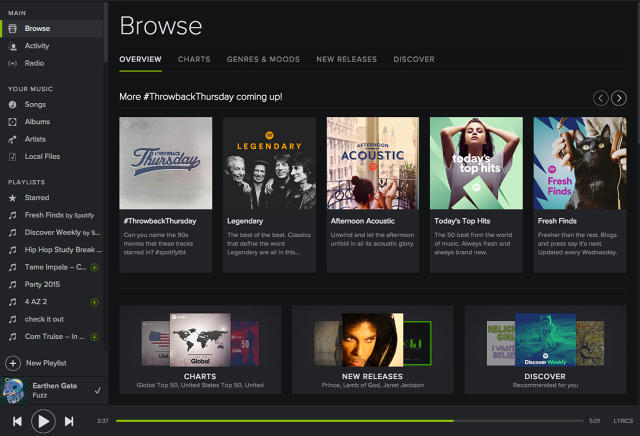
As machines pull in billions of different alerts about song from consumer habits and the internet at massive, flesh-and-blood programmers like Basa still mine the track panorama the old school method: through attending shows, keeping an ear to the street, speaking to people in their tune business network.
“I pay quite a lot of attention to the heritage,” says Mjeema Pickett, the head of R&B programming for Spotify. “I take note of who’s singing in the background. a variety of artists I’ve come throughout that method.”
“Oh, and mixtapes too,” Basa chimes in. “Mixtapes are the NCAA of hip-hop.”
that isn’t to say that Spotify’s human curation efforts are 100% analog. These guys are tapping into issues like recent Finds and Discovery Weekly as neatly, in addition to song blogs and different digital sources, each inner and external.

“We take heed to knowledge as smartly,” says Doug Ford, Spotify’s director of track programming. “the whole lot is human-picked, but it surely lives or dies through the stats within the firm.” for instance, if a track on a exercise playlist gets skipped extra frequently than the same song it does on an R&B date-night playlist, Ford and his group know which use case higher suits the music and can tweak the lists consequently.
however with so many competitors within the song subscription area in this day and age—most notably, Apple—Spotify has its work cut out for it. My first day checking out Apple music, I was once blown away by using how smartly the app looked as if it would comprehend my tastes. regardless of barely ever the use of iTunes for anything else, Apple song knew to ship me a hand-curated listing of Krautrock deep cuts, as well as a playlist primarily based off Madonna’s early albums. An oddball pairing, but both issues i like. Apple’s playlists can get delightfully hyper-explicit, like “Indie Hits From 1994” and “Neo-Adventures In Neo-Psych,” again both issues that appear hand-picked by way of my easiest pal to snatch my consideration.
This, mixed with Apple’s huge set up base and advertising may, is what Spotify is now up in opposition to. Daunting sure, however the Swedish startup is wasting no time ramping up its curation and discovery efforts, most likely amongst other features. Apple can have a military of professional song curators around the world, however Spotify is constructing out its personal curation brigade, backed by means of seventy five million customers—not to mention the group of developers, information scientists, and product specialists toiling away in Spotify’s labs.
“Our secret weapon is the truth that we have so many passionate song fanatics on the service for so many years,” says Ogle. “That means that the following technology of people attempting out Spotify can make the most of all of that curation and utilization. I see personalization as an enormous a part of now not simply attracting customers, however holding them.”
(119)

